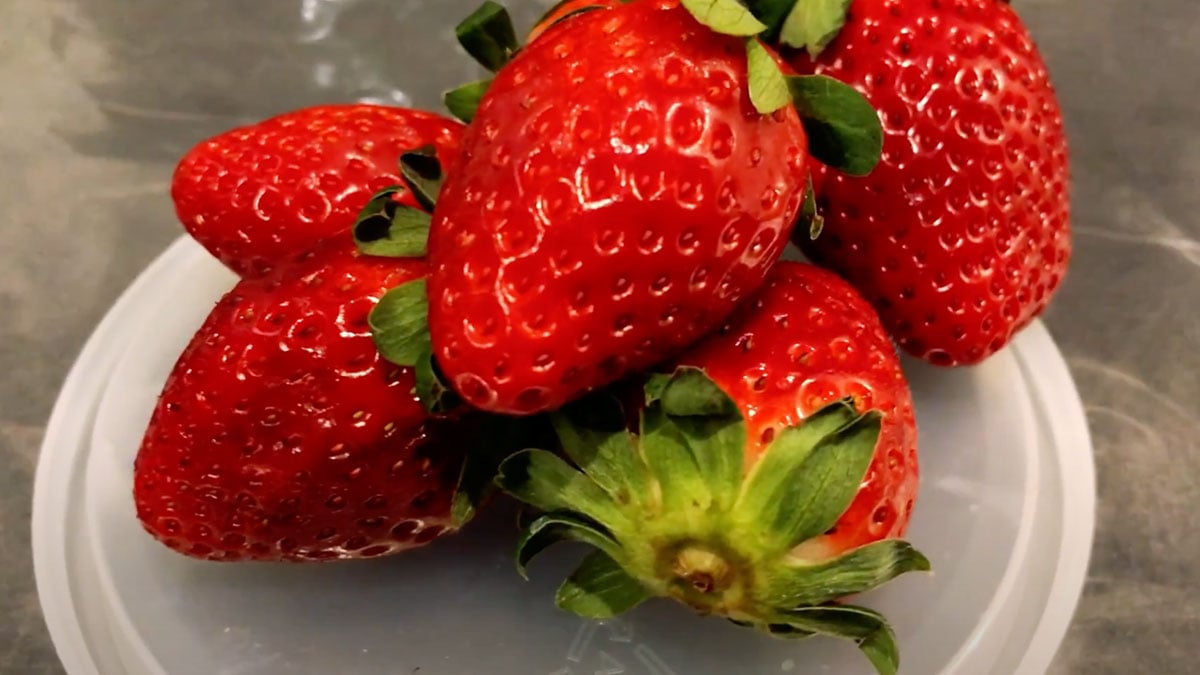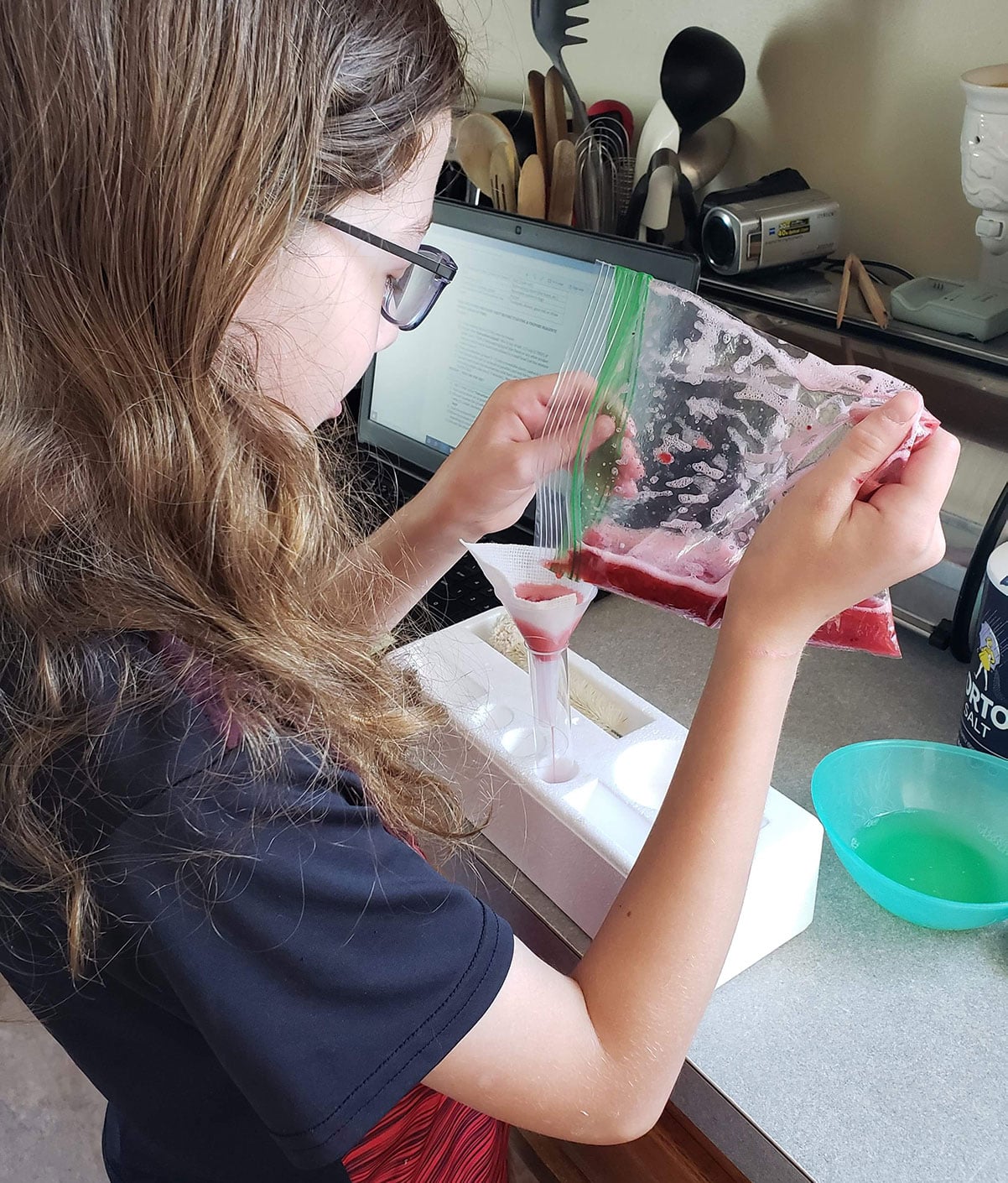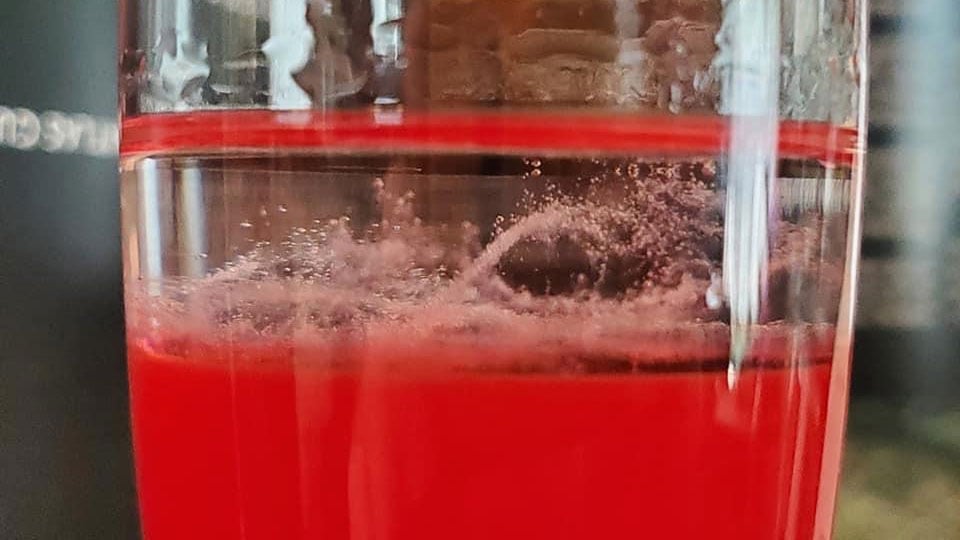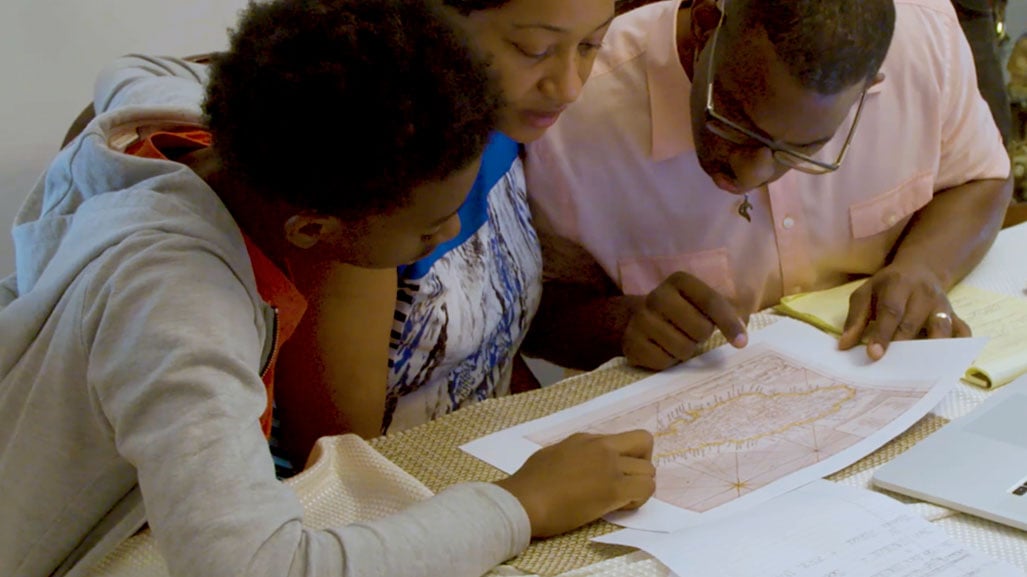Activity SixExtract DNA from Strawberries

Activity Goal Find out whether you can extract DNA from a strawberry
Materials Needed
- 70% isopropyl rubbing alcohol
- 3 large strawberries
- ⅓ cup water
- ½ teaspoon salt
- 1 tablespoon liquid dish soap (such as Dawn)
- Measuring cup
- Measuring spoons
- Mixing bowl
- Cheesecloth
- Funnel
- Tall clear drinking glass
- Small clear drinking glass
- Resealable plastic food storage bag
- Tweezers
- Printed Strawberry DNA Instruction Sheet
Overview:
All living things, from acorns to human beings, store genetic information in DNA. You may have never thought about looking for it, but did you know you can extract DNA from a plant and see it with the naked eye?
You can!
Let’s do it.
Instructions:
- Chill the bottle of rubbing alcohol in the freezer before beginning.
- Completely line the funnel with the cheesecloth, and place the tube of the funnel down into the tall glass.
- In the mixing bowl, mix together the water, salt, and liquid dish soap. This is your extraction liquid.
- Cut the stems from 3 large strawberries. Place the berries in the resealable plastic bag.
- Add 3 tablespoons of the extraction liquid to the bag. Lay the bag flat on its side and press out all of the extra air. Seal the top of the bag tightly.
- Use your hands to squish and squeeze the strawberry mixture for 2 minutes. Try not to poke any holes in the bag while you do that.
- Pour the strawberry mush from the bag into the cheesecloth-lined funnel. Let the mush drip into the glass until there is very little liquid left in the funnel. Remove the funnel and drained mush.
- Pour the filtered strawberry mixture from the tall glass into the small drinking glass so it is one quarter full.
- Take the rubbing alcohol out of the freezer. Using the measuring cup, measure ½ cup of cold rubbing alcohol.
- Tilt the small drinking glass with the filtered strawberry mixture and SLOWLY pour the rubbing alcohol down the side of the glass. You are trying to avoid churning the liquids. Pour until the alcohol has formed about a 1-inch deep layer on top of the strawberry mixture.
- Wait. . .
- Use your tweezers to collect the cloudy clumps that form between the alcohol and strawberry layers. This is the strawberry DNA!
- Analyze the DNA clump. What do you observe? Do you think the DNA of other fruits or vegetables will look the same? Experiment using this same method with other plant tissues to find out!


How it works
Strawberries are a great choice for a DNA extraction lab because they are octoploid, meaning that they have eight copies of each type of DNA chromosome. (Human cells are generally diploid, meaning they have two sets of chromosomes. Most organisms only have one genome copy per cell.)
Each component of the extraction mixture plays a part. The dish soap helps dissolve the cell membranes. The salt creates an environment where the DNA strands can clump together. DNA is not soluble in isopropyl alcohol, especially when the alcohol is ice cold, so they rise to the top when the cold alcohol is added.
A single strand of strawberry DNA is extremely tiny, too tiny to see with the naked eye, but because the DNA clumped in this activity you were able to see just how much of it three strawberries have when all of their octoploid cells are combined!
Downloads

